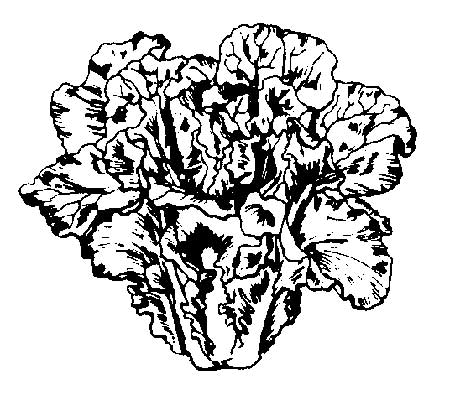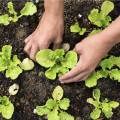Cabbage, Chinese
Chinese Cabbage

Several different vegetables are commonly called Chinese cabbage. There are both heading and nonheading types. Michihli types form tall, cylindrical heads.
A second type, Napa, forms heads similar to loose heads of savoy cabbage. A third type, Pak Choi or Bok Choi, often called celery cabbage, resembles swiss chard and is nonheading. All types rapidly go to seed in warm weather, which makes them better suited for fall rather than spring gardens. Sow seeds in early fall and thin seedlings to stand 8 to 12 inches apart. It is important that the plant growth not be interrupted.
Varieties
- China Express—hybrid; early, slow-bolting Napa type; for spring planting; disease resistant.
- China Pride—hybrid; rugged Napa type; best for fall; broad, large heads; good, dark green color; disease tolerant.
- Monument—hybrid; Michihili type; 18 inches tall; dense head with deep green outer color and white interior; 80 days.
- What-A Joy—Pac Choi hybrid; Joy Choi is white-stalked.
Publications
News
With nearly a decade of horticultural production experience, the new vegetable specialist with the Mississippi State University Extension Service plans to serve growers statewide.
Spring is right around the corner, and you probably are getting an itch to start setting out plants in your landscape and garden. If you’re new to gardening, you’ll need to know what plant hardiness zone you’re in.
RAYMOND, Miss. -- Many of the practices associated with sustainability, such as recycling, can be extended into the garden. Composting is a way to help reduce organic waste that goes to the landfill and helps feed gardens. These organic materials, which include grass clippings, leaves and other yard wastes, account for about 30% of trash that goes to the landfill.



